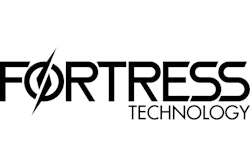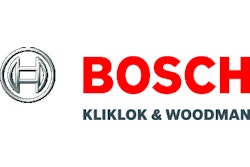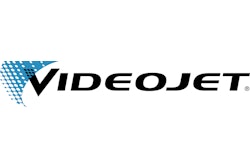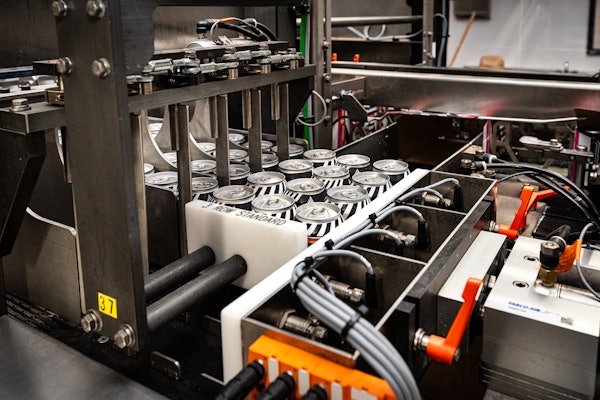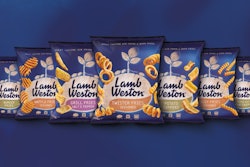Patience, planning, and careful calibration are the hallmarks of a three-year project that is bringing some seriously upgraded weighing and bagging machinery to snack manufacturer Lance, Inc., makers of Cape Cod, Tom’s, and other salty snack brands. Analysis began in the Fall of 2006. Installation at three plants—Corsicana, TX; Perry, FL; and Lance’s headquarters facility in Charlotte, NC—began in the Fall of 2007 and will come to completion some time in 2010. Total investment in the ambitious project comes in at about $8.1 million.
“With a few exceptions, our whole fleet of salty snack bagging systems dated back to the 1980s,” says Project Engineer Toby Strickland. “Out of the entire fleet of scale/bagger pairs, we determined that 55 had to go. But with the aid of Kliklok-Woodman’s spreadsheet calculator, we came up with a way of replacing them with just 38.”
As Strickland’s comment would suggest, the central machine supplier in this operational transformation was Kliklok-Woodman (www.kliklok.com). A total of 38 KW baggers, each paired with a Yamato (www.yamatocorp.com) combination scale, are being installed at Lance’s three plants.
A recent Packaging World tour of Lance’s Corsicana, TX, plant provided a good view of what is happening at all three of the Lance plants involved in this automation makeover. In one section of the 107,000 sq ft plant, a bank of six bagger/scale combinations have been installed. The 14-head combination scales are Yamato’s Alpha 514 models and the baggers are KW’s intermittent-motion Polaris models. Delivery of salty snacks to the weighing/bagging systems is done by the same system of vibrating pans as was used before. Around the corner are three more sealer/bagger pairs, but these are for higher-speed operations, and so the baggers are KW’s continuous-motion Cyclone series and the up-top combination scales are Yamato’s Sigma series. Once again, the product delivery system was retained.
Impressive analysis and planning
“It’s helpful that both the Polaris and the Cyclone baggers have the same operating system, because it means that the operator interface is exactly the same on both systems,” says Strickland. This common look and feel is part of a corporate specification that maximizes flexibility by allowing assets to be transferred to any plant in the Lance system.
Strickland notes that the bags produced on the new systems at Corsicana range from 1 oz to 1 lb. He also says the top speed on the Cyclone is around 130 bags/min. While the shiny new hardware is the most visible outcome of Lance’s ongoing push to modernize, an equally compelling part of this story revolves around the analysis and planning stages that preceded the purchase of the hardware. Kliklok’s Andrew Parlour admires the forethought that went into the project.
“One thing Lance did exceptionally well is plan in advance,” says Parlour. “That’s what allowed us, together, to develop the spreadsheet calculator.”
“With the calculator,” says Strickland, “we entered the number of SKUs we needed to run on a bagger, what our capacities were on that bagger, the rate at which we’re able to distribute snacks to the bagger, and a few other important operating parameters, as well. With that information fed in, the calculator spit out answers. It showed us where intermittent-motion machines would be appropriate and where continuous-motion made more sense. It also showed us that we could increase efficiencies to the point where we could remove 55 scale/bagger systems and replace them with 38 while keeping the same output.”
According to Parlour, Lance was the first KW customer to use the calculator tool. “As useful as it is, it can’t really be used unless the customer has a clear understanding of their business and is willing to share that detailed information with us,” says Parlour. “Lance had the necessary understanding and was good at sharing. It became a very productive partnership.”
One part of that partnership involved training. “We wanted to do everything we could to ensure success, and training was part of the package,” says Strickland. “Before equipment leaves Kliklok-Woodman, Lance operators and mechanics go there for a week-long training session. We’ve found that it not only makes in-plant startup easier, it also simplifies whatever troubleshooting has to be done after startup. You can pinpoint things and fix them more quickly when you have a good foundation to build on.”
According to Strickland, the purchase contract was very specific about things like efficiency targets, weighing accuracy, and film waste. “We wanted to increase efficiency by 10 to 15 percent, reduce giveaway by 50 percent, and reduce film waste by 50 percent,” he says. “All indications tell us we’re right on track.”
Don Roberts, plant manager at the Corsicana, TX, plant that PW visited, says maintenance costs have also gone down. “It’s not only because new equipment is so much more robust,” says Roberts. “It’s also because the new systems rely more on electronics and less on purely mechanical components. I just don’t see those purchase orders for replacement parts coming in the way I used to.”
Other important contributions
Strickland notes that vendors beyond KW and Yamato include Videojet (www.videojet.com), Fortress Technology (www.fortresstechnology.com), and A.C. Horn (www.achornco.com). “We wanted the same thermal-transfer printer on the continuous-motion systems as we have on the intermittent-motion,” he explains. The Videojet DataFlex Plus was selected as the coding system for the job. “You configure them a little differently for continuous motion than you do for intermittent. But once that’s taken care of, the operators have the same look and feel across the board when it comes to coding.”
Metal detectors from Fortress Technology are on all three Cyclone/Sigma continuous-motion systems, and Strickland says they’re being added to all six of the Polaris/Alpha intermittent-motion systems.
Collating of bags prior to manual case packing gets a boost of automation on some packaging stations thanks to a packoff and collating system supplied by A.C. Horn. It takes flat bags and upends them so that the operator can easily grab a group and place it in a case.
Now about a year into the installation phase of the project, Strickland and Lance managers at each plant are looking at how the new equipment can provide better access to useful data. “End-of-shift or end-of-day data is being pulled, but the next step is to get down to real-time data throughout the day,” says Strickland.
The firm installed in 2008 an Oracle (www.oracle.com) Enterprise Resource Planning (ERP) system, and the plan is to have all of the weighing and bagging systems tightly integrated with it in the very near future. Says Allen Moore, corporate electrical controls manager, “We want visibility into just about any aspect of our manufacturing process, including packaging machinery.”
The other area that will receive some extra attention now that machine installations are moving forward is film specs. Lance is in conversations with its film vendors to bring film structures down wherever possible. “Sustainable packaging is being looked at everywhere,” says Strickland.
As for the machinery part of the project, Strickland says he’s mighty pleased. “Our targets are being met or exceeded.”






